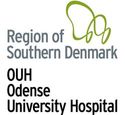Research Overview


We are currently working on several projects involving germ cell in-vitro propagation and differentiation, testicular biology of fetal, infant to adult testes, fertility preservation and restoration techniques.


Background
Almost 1% of all Danish boys, who face infertility in adulthood,
is likely to benefit from new fertility preservation methods including three groups of boys who can be identified in pre-pubertal age:
– Group 1: Boys with malignant diseases who need gonadotoxic treatment or boys with benign diseases requiring bone-marrow transplantation.
– Group 2: Boys with non-descended testis (cryptorchidism) who have impaired germ cell number and not responding to early surgical correction of testicular placement or adjuvant hormonal treatment.
– Group 3: Boys with Klinefelter syndrome, which is the most common genetic cause of male infertility. The number of germ cells is normal during foetal development, but the germ cell number declines progressively from early years of life.
Currently there is no clinical proven fertility restoration option for these groups of patients, but cryopreservation of testicular biopsies is now being introduced in early infancy, when spermatogonial stem cells (SSCs) are still present. SSCs are the precursors of sperm cells in adult life and the foundation for male fertility. They are formed during fetal life, maintained by self-renewal and undergo meiosis and full maturation after puberty. The aforementioned diseases and gonadotoxic treatments may cause depletion of SSCs in which case the boy is facing infertility in adult life.
In animal models, new methods to save fertility in such individuals are now being developed. The SSCs are cryopreserved in early life and subsequently propagated in vitro and then transplanted into existing testis tubules, where spermatogenesis is reinitiated. However, it is a challenge to identify germ cells with optimal genetic expression for transplantation and the techniques for transplantation of ex vivo cultured germ cells back to the testes needs to be refined in order to succeed with restoring the fertility potential in humans.
Our Goals
To understand the basics of germ cell development from fetal gonocytes to different types of spermatogonia in order to develop therapeutic solutions for fertility preservation and restoration in the clinical settings.By retrieving and cryopreserving testicular tissue prior to initiation of the cancer treatment, it could be an option of restoring fertility by implanting the cryopreserved-thawed testicular tissue after recovery.






Publications so far
- Gul M et al. Review of injection techniques for spermatogonial stem cell transplantation. Hum Reprod Update 2020 April
- Dong et al.
- coming
Learn more about us

European Reference Network

Department of Urology
Herlev, Denmark

Department of Cellular and Molecular Medicine
Copenhagen, Denmark

Department of Clinical Medicine
Copenhagen, Denmark

Department of Paediatric Surgery
Copenhagen, Denmark

Department of Paediatrics and Adolescence Medicine
Hvidovre, Denmark

Department of Reproductive Medicine
Odense, Denmark

Fertility Clinic
Odense, Denmark

Laboratory of Reproductive Biology
Copenhagen, Denmark
